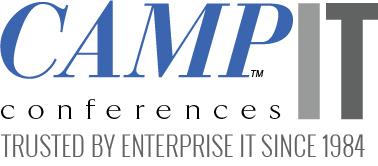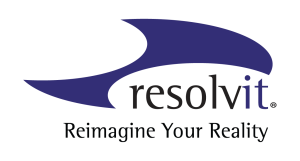PAST EVENTS
Cloud Architecture: Chicago (Rosemont/O’Hare), Illinois
Strategies for building and refining the architecture.
April 20, 2023
9:00am-5:00pm
7 CPE / 0.7 CEU / CISSP / 7 PDU Credits Awarded
Conference location: Donald E. Stephens Convention Center Rosemont (O’Hare) Illinois
Overview
Once your organization’s business needs have been established, you can then create a plan that integrates infrastructure and platform strategy with the supporting cyber resilience.
What You Will Learn
In this one day conference attendees will learn:
- Authoritative IPAM for Multi-Cloud & Hybrid Networks
- Future Proof Your Data Architecture – Application Modernization
- Cloud Adoption Unleashed: Accelerating Business Growth and Transformation
- Designing a Business-Driven Cloud Security Architecture
- How to Rethink Your Next Generation Cloud Data Architecture
- The 5 R’s of Mainframe Modernization to Cloud Options: Mix and Match!
- How IT Executives Build Robust Cloud Architectures (Enterprise IT Panel Discussion)
Conference Price: $299.00 per person
Each attendee will receive a certificate awarding 7 CPE credits for CISSP continuing education, in addition to 0.7 CEUs and 7 PDUs. CISSP is a registered certification mark of (ISC)², Inc.
Conference Agenda
8:00am – 9:00am: Registration and Continental Breakfast
9:00am – 9:50am: Cloud Adoption Unleashed: Accelerating Business Growth and Transformation – Tackling Organizational Mindset and Architectural Challenges for Effective Cloud Adoption
Jim Gehring, Digital Strategist & Evangelist, Expedient
In the dynamic and rapidly evolving digital landscape, businesses must continuously adapt and innovate to maintain a competitive edge. Although cloud adoption has proven to be a vital catalyst for enhancing business operations and driving growth, numerous organizations find it difficult to harness its full transformative power due to hindrances rooted in legacy IT infrastructure.
This engaging and interactive session will examine the two main obstacles impeding this challenge: 1) organizational mindset, and 2) architectural design and operational proficiency. Join us on this enlightening journey as we delve into the complexities of cloud adoption and its repercussions on business performance and expansion.
We will explore practical strategies to bridge these gaps, empowering your organization to optimize and modernize its IT infrastructure, which naturally unlocks cloud’s potential for unprecedented business growth.
Gehring
9:50am – 10:20am: Refreshment Break
10:20am – 11:10am: The 5 R’s of Mainframe Modernization to Cloud Options: Mix and Match!
Andrew Wickett, VP North American AM2C & AMC Enterprise, Micro Focus
When looking to modernize mainframe applications with cloud, the choices come in 5 main categories. Retire? Replace? Retain? Rehost? Replatform? Refactor? Maybe the answer is all of the above!
We’ve helped hundreds of organizations modernize their mainframe applications. We know what works and what doesn’t. We know that the options vary, and many large companies have multiple strategies. It’s not “one size fits all” and it’s OK to “tweak” the plan.
We’ll explore the key factors, how to determine what’s best for your organization and applications, how to get the project funded, the risks and what to watch out for. Through real examples of organizations that have started their journey to cloud, you’ll learn which options might work best for you.
Wickett
11:10am – 12:00pm: Designing a Business-Driven Cloud Security Architecture
Joseph Kupiec, Team Lead, Cloud Solutions Group, PSM Partners
Failure is not an option. Risk must be minimized at all costs. Unfortunately, when defining, creating, and implementing security architectures, we often focus too much on the technology and risk management at the cost of value add to the business. Regardless of whether security architectures succeed or fail technically, ones that neglect to include or downplay the value add to business, will always fail the business.
What makes a successful security architecture? Yes, we must manage risk, prevent identity sprawl, move towards Zero-Trust, etc. but, we must also keep one objective in mind throughout the entire security architecture lifecycle – enabling the business. The best security architects, programs, and architectures not only meet or exceed their technical requirements, but more importantly (let me say it again), they all enable the business. Information security professionals and the industry itself (generally speaking) have a bad reputation. Many, if not all of us, have experienced the groans and sighs when walking into a room of our colleagues. “Why don’t they just leave us alone?”, “I bet you they’re going to require ten more characters for our passwords”, “Why don’t they just let us do what we [the business] needs to do?”. How do we move forward?
It starts and ends with us. Designing a Business-Driven Cloud Security Architecture is not an easy task. It will require us to change our mindsets, adapt the way we approach issues, modify the way we communicate, and transform our relationships with the business. Some of the important items to be discussed are treating the organization as a single entity rather than a set of cooperating departments, aligning information and communication technologies with business processes, and treating cloud security architecture as a business issue. The application of the 6 W’s to gain a clearer understanding of business requirements for systems will be explained. Upon conclusion of this presentation, you will have the necessary information to change those groans and sighs to cheers and smiles.
Kupiec
12:00pm – 12:40pm: Lunch & Exhibit Break
12:40pm – 1:30pm: Authoritative IPAM for Multi-Cloud & Hybrid Networks
Ed Fee, Senior Manager, Technical Sales, Infoblox
As soon as you start moving assets to a private or public cloud, you have a hybrid architecture with multiple repositories of DNS, physical & virtual networks, and IP addresses. This is often called “DDI” an acronym for DNS, DHCP, and IP Address Management or IPAM. Typically, most on-Prem networks already include multiple repositories of DDI data as they may have Microsoft, VMware and potentially Nutanix, all with different versions of authoritative DDI data for which they are responsible. Moving applications and services to public clouds greatly expands the complications of supporting these disparate repositories of IP addresses, virtual networks, and DNS records. Not obtaining a current comprehensive view into the status and availability of all your global assets can lead to a potentially disastrous operational collapse. True automation of provisioning, monitoring, and protecting your applications and services requires complete and continuous visibility of all your global assets within a single authoritative IPAM system.
Creating a single authoritative database of all your current DDI data greatly helps in the automation of DNS/IP provisioning and deprovisioning, and coordinates allocation and release of IP address and DNS registrations with orchestration tools across servers, networks, and storage. In addition, using DDI data to its fullest capabilities ensures greater global availability and protection for all your enterprise applications through health checks and monitoring of DNS queries.
This presentation will show how to enhance your application automation efforts of multi-cloud migrations, ongoing operations, all while increasing their performance, availability, and security.
Fee
1:30pm – 2:20pm: Future Proof Your Data Architecture – Application Modernization
Narendra Rao, Sr. Customer Success Engineer, Couchbase
Are your systems, technology platform, and architecture ready to propel your Organization into the future? Make sure you and your company are prepared to quickly adjust, evolve, and accelerate past your competitors.
Rao
2:20pm – 3:00pm: Refreshment & Exhibit Break
3:00pm – 3:50pm: How to Rethink Your Next Generation Cloud Data Architecture
Karthik Kandamuri, Director, Enterprise Architecture, AbbVie
In the last dozen years, data architectures to support BI/Analytics and reporting have evolved.
In this session, attendees will learn the key components of a next generation data architecture which include:
- How to Break Away from Traditional Data Warehouse Architectures
- How to Minimize Data Copies
- How to Separate Data from Compute
- How to Accelerate Time to Value
- How to Integrate Self Service

Kandamuri
3:50pm – 4:40pm: How IT Executives Build Robust Cloud Architectures (Enterprise IT Panel Discussion)
In this session, attendees will learn their peers are building cloud architectures that are exceeding business expectations.
Moderated by: Sean Brown, Chief Product Officer, Rising Cloud
Panelists include:
- Trent Ridgway, Head of Cloud Infrastructure & Security / Senior IT Project Manager, Anning-Johnson Company
- Val Mushinskiy, Principal and Vice President of Cloud Services, ZS
- Matt Frye, Senior Cloud Architect, CUNA Mutual Group
- Jonel Rienton, Manager, Global SAP Basis and Enterprise Databases Global Digital & Information Technology Department, Littlefuse, Inc.
- IT Executives sharing strategies, tactics, and lessons learned
Brown Ridgway Mushinskiy Frye Rienton
4:40pm – 5:20pm: BC/DR & Cloud Architecture
Annur Sumar, Chief Technology Officer, Cloud Unity
Seasoned practitioners are aware that BC/DR practices can reduce the cost of cyber breaches. But breaches will still occur and they will happen with greater frequency. How do you leverage all that DR/BC can offer to reduce the risk and mitigate the effects?
In this session attendees will learn:
- How DR/BC teams can work together more effectively to plan for a breach
- How you can improve recovery times from a breach
- How to strengthen the resiliency of your infrastructure to reduce the risk if
these incidents - How to leverage Azura for BC/DR Planning
Sumar
Conference Price: $299.00 per person
Each attendee will receive a certificate awarding 7 CPE credits for CISSP continuing education, in addition to 0.7 CEUs and 7 PDUs. CISSP is a registered certification mark of (ISC)², Inc.
Exhibits
As is always the case at CAMP IT Conferences events, the talks will not include product presentations. During the continental breakfast, coffee breaks, and the luncheon break you will have the opportunity to informally meet representatives from the following sponsoring companies, who have solutions in the area of the conference.
















